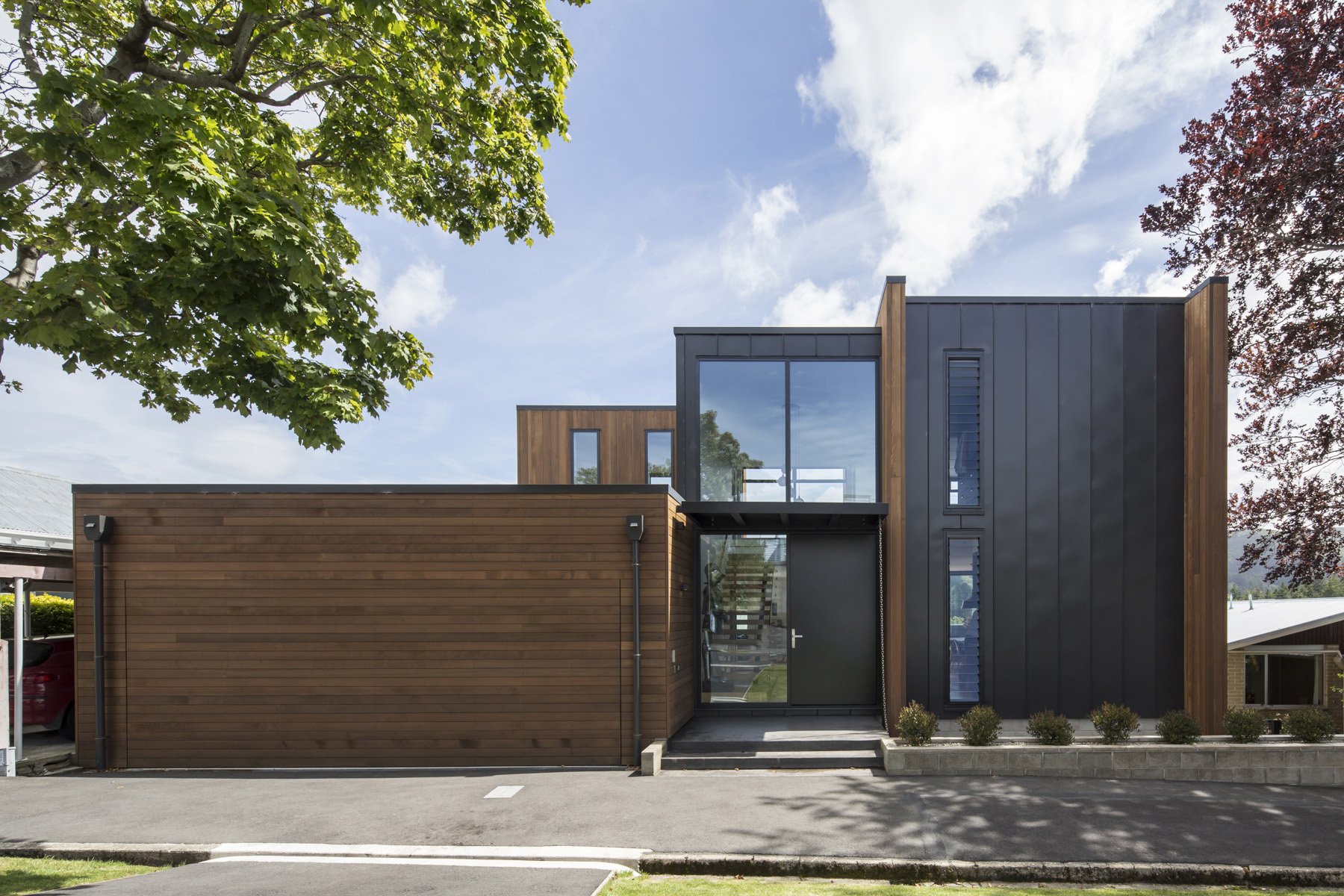This Dunedin home pushes boundaries, as Kim Dungey reports.
Built on a small urban site, this Dunedin home still manages to be light and spacious.
Set on a 336sqm section, the house needed resource consent because it did not comply with rules about site coverage or set-

backs from boundaries. One of the owners, Barry Timmings, says the project proves a big section isn't necessary to have everything you need. And he believes such housing could become more common in Dunedin in the future.
It was 10 years ago, after they had already built in Dunedin and Wanaka, that he and wife Jude bought the site. The couple's interest was not so much in the house that had been there for about 70 years but in the sloping Grater St section, which sat well to the sun and was surrounded by mature trees, giving it an established feel.
One of those trees was a large, listed copper beech on a neighbouring property that, from the street, helps lessen the visual impact of the four-bedroom home and from inside provides an ever-changing display as its leaves turn from deep purple to bronze.
"I designed the house in my mind many times over, and how construction was going to go ...'' Mr Timmings explains, "but the dappled light through the copper beech, that was my go-to image.''
After selling their nearby home and moving into an 80sqm two-bedroom rental, the couple and their two teenage sons had to sit tight for four years while the planning, resource consent process, demolition and building work were completed. That was longer than expected, but Mr Timmings said it brought them closer together.
And most would say the wait was worth it.
From the front, the house appears to be only two storeys but the sloping site allowed a third to be tucked in below street level and still have an outlook. Their sons' bedrooms and living area are there, while their own bedroom and office are on the top level and the family areas - kitchen, dining and living - are in between.

Clad in cedar and profiled metal, the home provides panoramic views over neighbouring roof tops to the verdant grounds of John McGlashan College and Balmacewen Golf Course.
The stately copper beech that had to be protected during site work is visible through the kitchen windows. In the master bedroom, they feel as though they are up among its branches. A native tree outside the living area was retained despite being close to the house and the garage was made wider than usual so they could drive in either side of a tree on the grass verge.
Inside, the couple wanted a slightly Scandinavian feel, with simple, clean lines and plenty of light. White walls and pale oak floors contrast with dark kitchen and bathroom tiles. A 1960s Danish sideboard takes pride of place in the living room.
Glass stacker doors opening to the north and tall, narrow windows on both sides of the house provide a balance between privacy and views.
A suit of armour, complete with long sword, stands to attention just inside the front door. A replica of 15th-century Scottish armour, it came from India, "turning up in massive crates, wrapped in a Mumbai newspaper'', Mr Timmings says.
"I always threaten to wear it on Halloween and scare the trick-or-treaters. The helmet gets some use, as it's easy to get on and off, but I've never had the whole [suit] on.''
Warmed by a ducted heatpump and floor vents, the house also has a bank of tall cabinets that satisfies both owners, one of whom likes things out, the other who prefers them hidden away. One set of doors folds back to reveal deep kitchen drawers and a 2m-long bench for small appliances. The other gives access to a computer nook, from which Mrs Timmings runs their two restaurants, Harbourside Grill and The Bund.
Mr Timmings points out the hardware that allows the
bifolding doors to open across the full width of the cabinets, then slide into side pockets flush with the cabinet body. The chartered accountant enjoyed researching products like this for the project but is also quick to praise the work of builder Richard Geeves and architect Simon Parker, of Parker Warburton Team Architects.
The build did attract objections from some neighbours who were concerned about the scale of the house and the impact it would have on their properties and the street's character.
At 397sqm, the home covers 58% of the site (the maximum permitted in the area is 40%). The garage is set back only 0.8m from the street boundary and the house 2.7m. The previous house was 2m from the road and also did not comply with the district plan.
A mayoral candidate at the last election, Mr Timmings says people enjoy living in the heart of the city and Dunedin could have more higher-density housing in the future.
"There's a catch-cry at local government level around building a compact city and I completely subscribe to that. We don't want houses all the way to Middlemarch, so we have to think intelligently about how we facilitate a different style of housing - and more housing - for the people who live here or the people who want to come.''
One solution is better infill housing, he says. Another is not being "so precious'' about the supply of new residential sites: "If people want to buy a section, they've pretty much got to go to Fairfield or Mosgiel. Prices are creeping up and there's actually not that many. So we shouldn't be applying unnecessary constraints.''
At this stage of their lives, the Maori Hill home perfectly suits the needs of him and his wife, he says. But they will probably build again when their youngest child leaves home.
"A lot of people who go through the building process say they'll never do it again but we really enjoy it.''


















